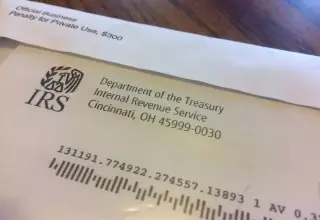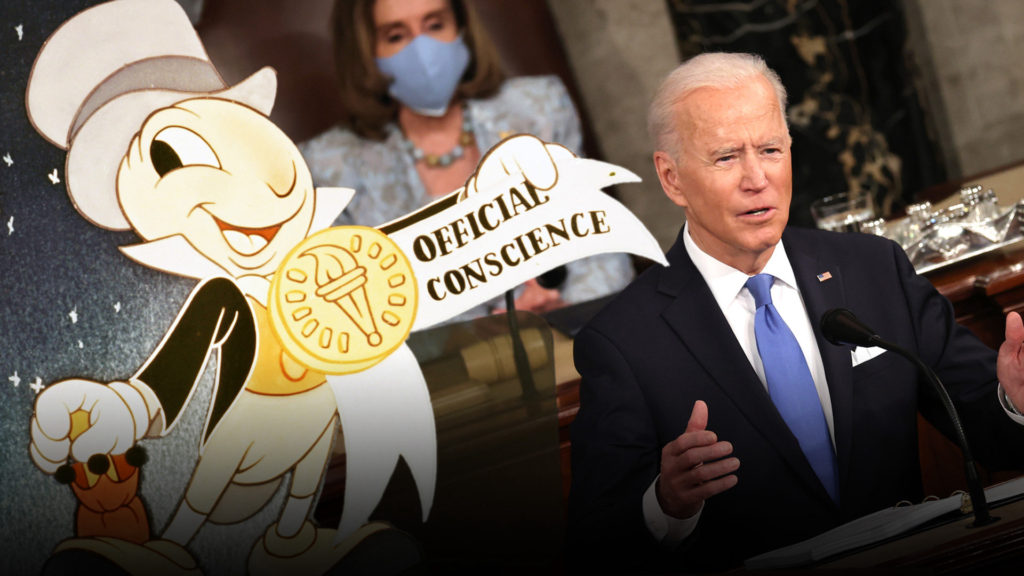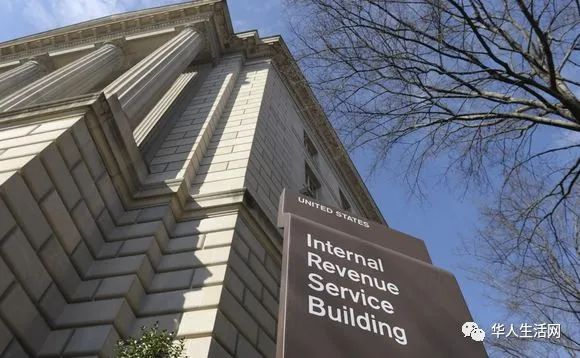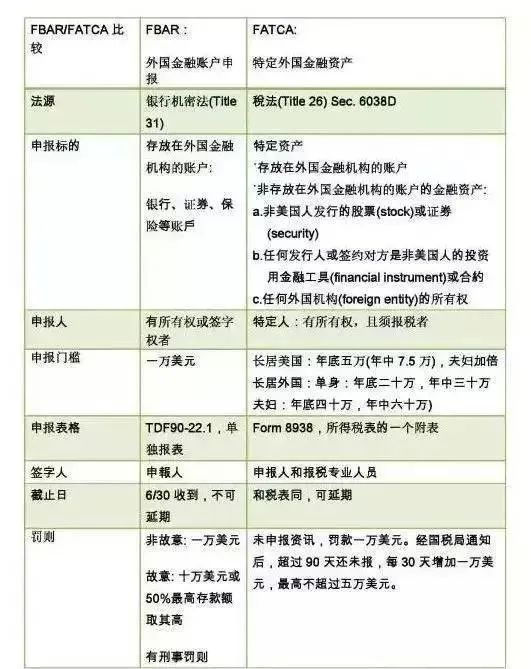
0糖0卡饮料不仅有害健康,还越喝越胖
4/04/2022
这几年,0糖0卡的无糖饮料风靡全球,销量越来越高。
推出无糖饮料的可不止哪一家厂商,而是几乎所有饮料厂家都推出了这种饮料,因为这东西根本就没有门槛,制作非常简单。
消费者买这种饮料的最大原因就是为了减肥,因为0糖0卡的饮料号称自己无糖无能量,能让你变瘦,能降低血糖,所以对你的身体健康有很大帮助。 这种饮料确实不含糖,确实没能量,因此这种宣传看起来好像没有什么问题。但根据全球科学家最新研究成果和官媒的正式报道,这种无糖饮料不仅有害健康,甚至还会让你越喝越胖。
先说为什么无糖饮料越喝越胖,这个估计是大家最关心的,无论男女。
首先,为证明这个结论的权威性,先贴来源。在人民网的报道中,北京协和医院临床营养科主任医师陈伟对大家说,0卡0糖的饮料不仅会使你变胖,还会增加你患糖尿病的风险。
他们联手给出的医学结论,怎么都比那些饮料厂家以及小道消息说的东西要靠谱吧。然后,我用尽可能简单的语言,给大家解释下这个结论的原理。为什么饮料可以做到0糖0卡?因为这些饮料里用了代糖,也就是人工甜味剂,伪造出了甜味,这些人工甜味剂特别特别的甜,会比白糖甜几百倍,所以造出很甜的无糖饮料非常简单,甚至造出甜几百倍的无糖饮料都很简单。下表中的营养性代糖,就是还有点能量的代糖,非营养性的代糖不可吸收分解,因此没有任何能量,所以成为了那种所谓0卡0糖饮料的核心元素。我们小时候吃的糖精,就是人工合成代糖的一种,同样拥有调配0卡0糖饮料的能力,只不过无糖饮料兴起前刚被证明有神经毒性禁用了而已。

现在0卡0糖饮料采用的人工代糖,什么阿斯巴甜,什么安赛蜜,虽然允许使用,但都具备一个共同的特点,就是很甜,会让人的大脑误认为你在吃糖。
然后,你的大脑会下达通知,糖已经吃下去了,血糖即将上升,胰腺你该起来干活了,赶紧给我分泌胰岛素。但事实上,你吃的是假糖,血糖根本没有上升,这就会导致你分泌的胰岛素过多,体内大量的血糖在胰岛素的作用下被合成了脂肪。然后你就惨了。
胰岛素分泌的数量超过大脑预估值会带来两个恶劣结果,首先你的体脂被超标合成,这会导致你脂肪增多,然后你身体的血糖会低于大脑的预估值。血糖过低导致的连锁反应,是你的大脑要求你立即吃食物来把血糖补充到正常水平。很多人喝0卡0糖饮料后会变得更饿,比平时更能吃,就是这个原因。
因此,零糖饮料确实是无能量的,但很多人在喝下这种饮料后却发现自己变得更胖了。喝无糖饮料会变胖这个有违常识的结论,最初是以色列一个科研团队发现的,他们在研究人工甜味剂安赛蜜时,连续4周向小鼠投食安全剂量内的安赛蜜,结果却发现小鼠的体重明显增加,让科研人员大惑不解,因为安赛蜜明明无法消化吸收。
后来,其他科学家也对很多人进行了长期随诊,通过对比发现,同样喝碳酸饮料,喝无糖饮料胖的人明显更多,对以色列的研究结果进行了确认。因此,才出现了人民网的这篇报道。
不仅如此,科学家们还在随诊中发现,因为人工代糖误导了胰岛素的分泌,在长期喝无糖饮料的那批人里,胰腺对糖的敏感度越来越低,分泌胰岛素越来越缓慢困难。
这句话的意思,就是0糖0卡饮料的消费者人群得Ⅱ型糖尿病的概率会明显提升。
当然,完整的医学论述比我这个复杂的多,我只是简单的说一下里面的核心推论过程。
除此之外,人工甜味剂对人体健康造成的多重威胁也被全球科学家们越来越多的发现。
《美国心脏病学会杂志》发表的一项研究表明,每日饮用人造甜味剂饮料的人患心血管疾病的概率会升高32%。

央视发布的另一项研究表明,每日饮用无糖饮料的人,死亡风险会增大26%。

这两者的论证过程就复杂了,综合极多因素考虑的,几句话讲不清楚,就不讲了,大家知道央媒已经官方确认经常喝假糖配制出的无糖饮料会增大26%的死亡风险就行了。
除此之外,人民日报也发布了一些研究结果,证明了0糖0卡的饮料对肝脏和神经系统会产生负担,对人体骨骼发育和肾脏功能不利,对控制血压不利。
简单的说,在短短几天之内,人民网、央视和人民日报这三大中国顶级官媒联手发文,对0糖0卡饮料的危害性和非健康性做出了联手确认,下面跟着发的中小官媒和各地电视台无数。
这不是杀鸡用牛刀,是最大的三把牛刀带着一堆小刀直接一起上来宰这只鸡。没有十足的把握和学术证据,是不可能这么做的。
经多位营养学专家和科研团队的确认,经多位中国官媒的确认,0糖0卡饮料不仅不能让人减肥,还能导致人更快的发胖。除此之外,还会增大患糖尿病的风险,增大患心血管疾病的风险,对肝脏、神经系统、骨骼发育、肾脏功能均有不利影响,还影响人体控制血压。
综合以上我们可以得出一个结论,0糖0卡饮料百害无一益。
但这种东西,却被无良商家包装成减肥神器,对人体健康非常有益的存在,我觉得这真的是纯属骗局了,实际作用和宣传效果完全是截然相反。对我健康有害就算了,居然还会让我更胖,这简直是太过分了。
但偏偏,很多普通消费者还对这种0糖0卡的饮料特别迷恋,觉得自己越喝越健康。
因此,我觉得我今天有义务向大家科普这一点,希望大家和自己的亲人都不被这种饮料所欺骗。复杂的不用记,你记住一点就可以了。
0糖0卡饮料,越喝越胖,还会让你患糖尿病。
广而告之,避免亲人继续受害,是你我的义务。

收到「纾困款免税」先别丢 IRS来信非诈骗
世界新闻网
01/08/2022

为协助纳税人申报去年联邦所得税,国税局(IRS)计划自本月下旬起,寄发2021年政府发放第三次纾困支票相关信函;民众在接下来几周可望收到此信,收到时毋须惊讶,也不要把这封信丢弃。
国税局新闻稿指出,标注为6475号「您的第三次经济影响付款」信函,将书明在2021年收到的纾困金额和任何额外付款(plus-up payments);「这些信件可以协助纳税人或其税务专业人员准备2021年联邦纳税申报单。」
纳税人可以用它来确定,自己是否可以在申报2021年纳税单时申请「纾困退税抵免」(recovery rebate credit);有资格获得第三次纾困款、但实际收到金额与IRS信上写明的金额不同时,即可利用此项抵免来弥补差额。
纾困支票所得不必扣税,但仍需要在2021年纳税单中申报。
2021年纾困支票从去年3月开始发放给符合条件的受助人,符合条件的民众和每一位家属可以收到高达1400元纾困款;若符合发放条件者没有收到纾困金,或自身情况发生变化,例如在2021年生小孩,还可能有资格领到更多的纾困金。
与此同时,许多家庭可能已经收到或即将收到另一封有关2021年儿童抵税额(CTC)的信件。标注为6419号信函将包含有关CTC付款的重要信息;例如全家已预先收到多少金额,以及每月入帐款项是按多少名合格儿童数量计出。
国税局表示,「收到这些预付款项的家庭,应将自己2021年收到的预付款数额,与国税局信函中提到的儿童抵税额相互核对,才能在2021报税申报正确金额。」
符合资格却没有收到预付款项的家庭,可以在今年纳税时申领这笔款项。
You may receive a letter from the IRS about stimulus checks — here’s what it means
By Alicia Adamczyk
01/08/2022

Don’t be surprised if you receive a letter from the IRS in the coming weeks.
You’re not in trouble. The agency is simply sending out information about the third stimulus checks, which were disbursed in 2021. The letters are slated to start being mailed in late January.
When you get one, don’t throw it away just yet. “These letters can help taxpayers, or their tax professional, prepare their 2021 federal tax return,” the IRS said in a release.
Labeled Letter 6475, “Your Third Economic Impact Payment,” the correspondence will include how much you received in stimulus money in 2021, including any so-called plus-up payments.
You can use it to figure out if you can claim the Recovery Rebate Credit on your 2021 tax return. This credit will make up the difference between the amount of the third stimulus check you were eligible for, and how much you actually received.
Stimulus checks are not taxable, but they still need to be reported on 2021 tax returns, which need to be filed this spring.
The 2021 stimulus checks were disbursed to eligible recipients starting in March of last year. They are worth up to $1,400 per qualifying taxpayer and each of their dependents. Eligible recipients might qualify for more money if they never received a stimulus check at all, or if their circumstances changed. For example, if you had another child in 2021, they would qualify for their own payment.
Additionally, many families have received or will receive another letter about the 2021 child tax credit (CTC) payments. Labeled Letter 6419, it will include crucial information about the CTC payments, such as how much your family received in advance and how many qualifying children the monthly deposits were based on.
“Families who received advance payments need to … compare the advance payments they received in 2021 with the amount of the child tax credit they can properly claim on their 2021 tax return,” the agency said.
Families can also use the IRS’s CTC Update Portal on IRS.gov to find the same information about their payments.
Remember: Households that did not receive the advance payments, or did not receive as much as they were eligible for, can claim the money on their returns this year.
您的税档变了吗?IRS因通胀上调联邦收入税门槛
来源:美国中文网
11/10/2021
周三国税局(IRS)宣布,2022年联邦收入税的边际税率不变,但是考虑到通货膨胀,每档税率对应的收入区间将有所上调,另外最高抵免额度也有所提高。
2022年,调整后的个人报税者边际税率为:
10%: 不超过$10,275的收入部分
12%: $10,275到$41,775之间的收入部分
22%: $41,775到$89,075之间的收入部分
24%: $89,075到$170,050之间的收入部分
32%: $170,050到$215,950之间的收入部分
35%: $215,950到$539,900之间的收入部分
37%: 超过$539,900的收入部分
(以上收入均指调整后的应缴税收入)
夫妻合报的边际税率如下:
10%: 不超过$20,550的收入部分
12%: $20,550到$83,550之间的收入部分
22%: $83,550到$178,150之间的收入部分
24%: $178,150到$340,100之间的收入部分
32%: $340,100到$431,900之间的收入部分
35%: $431,900到$647,850之间的收入部分
37%: 超过$647,850的收入部分
(以上收入均指调整后的应缴税收入)
调整后,夫妻合报的最高档税率对应年收入上调了将近2万元。实际上,所有税档对应的收入水平较2021年都上调了3%左右。这一上调幅度是近四年来的最大值。
另外,对于个人报税者来说,联邦收入税的最高抵免额调涨了400元至12950元;一家之主的最高抵免额上调了600元至19400元;夫妻合报的最高抵免额则上调了800元至25900元。
每年,IRS都会根据通胀调整税率对应的收入水平。周三劳工部数据显示消费者价格指数同比上涨了6.2%,是自1990年来的最大年度增幅。
IRS provides tax inflation adjustments for tax year 2022
R-2021-219, November 10, 2021
WASHINGTON — The Internal Revenue Service today announced the tax year 2022 annual inflation adjustments for more than 60 tax provisions, including the tax rate schedules and other tax changes. Revenue Procedure 2021-45 PDF provides details about these annual adjustments.
Highlights of changes in Revenue Procedure 2021-45:
The tax year 2022 adjustments described below generally apply to tax returns filed in 2023.
The tax items for tax year 2022 of greatest interest to most taxpayers include the following dollar amounts:
- The standard deduction for married couples filing jointly for tax year 2022 rises to $25,900 up $800 from the prior year. For single taxpayers and married individuals filing separately, the standard deduction rises to $12,950 for 2022, up $400, and for heads of households, the standard deduction will be $19,400 for tax year 2022, up $600.
- The personal exemption for tax year 2022 remains at 0, as it was for 2021, this elimination of the personal exemption was a provision in the Tax Cuts and Jobs Act.
- Marginal Rates: For tax year 2022, the top tax rate remains 37% for individual single taxpayers with incomes greater than $539,900 ($647,850 for married couples filing jointly).The other rates are:
35%, for incomes over $215,950 ($431,900 for married couples filing jointly);
32% for incomes over $170,050 ($340,100 for married couples filing jointly);
24% for incomes over $89,075 ($178,150 for married couples filing jointly);
22% for incomes over $41,775 ($83,550 for married couples filing jointly);
12% for incomes over $10,275 ($20,550 for married couples filing jointly).
The lowest rate is 10% for incomes of single individuals with incomes of $10,275 or less ($20,550 for married couples filing jointly).
- For 2022, as in 2021, 2020, 2019 and 2018, there is no limitation on itemized deductions, as that limitation was eliminated by the Tax Cuts and Jobs Act.
- The Alternative Minimum Tax exemption amount for tax year 2022 is $75,900 and begins to phase out at $539,900 ($118,100 for married couples filing jointly for whom the exemption begins to phase out at $1,079,800). The 2021 exemption amount was $73,600 and began to phase out at $523,600 ($114,600 for married couples filing jointly for whom the exemption began to phase out at $1,047,200).
- The tax year 2022 maximum Earned Income Tax Credit amount is $6,935 for qualifying taxpayers who have three or more qualifying children, up from $6,728 for tax year 2021. The revenue procedure contains a table providing maximum EITC amount for other categories, income thresholds and phase-outs.
- For tax year 2022, the monthly limitation for the qualified transportation fringe benefit and the monthly limitation for qualified parking increases to $280.
- For the taxable years beginning in 2022, the dollar limitation for employee salary reductions for contributions to health flexible spending arrangements increases to $2,850. For cafeteria plans that permit the carryover of unused amounts, the maximum carryover amount is $570, an increase of $20 from taxable years beginning in 2021.
- For tax year 2022, participants who have self-only coverage in a Medical Savings Account, the plan must have an annual deductible that is not less than $2,450, up $50 from tax year 2021; but not more than $3,700, an increase of $100 from tax year 2021. For self-only coverage, the maximum out-of-pocket expense amount is $4,950, up $150 from 2021. For tax year 2022, for family coverage, the annual deductible is not less than $4,950, up from $4,800 in 2021; however, the deductible cannot be more than $7,400, up $250 from the limit for tax year 2021. For family coverage, the out-of-pocket expense limit is $9,050 for tax year 2022, an increase of $300 from tax year 2021.
- The modified adjusted gross income amount used by joint filers to determine the reduction in the Lifetime Learning Credit provided in § 25A(d)(2) is not adjusted for inflation for taxable years beginning after December 31, 2020. The Lifetime Learning Credit is phased out for taxpayers with modified adjusted gross income in excess of $80,000 ($160,000 for joint returns).
- For tax year 2022, the foreign earned income exclusion is $112,000 up from $108,700 for tax year 2021.
- Estates of decedents who die during 2022 have a basic exclusion amount of $12,060,000, up from a total of $11,700,000 for estates of decedents who died in 2021.
- The annual exclusion for gifts increases to $16,000 for calendar year 2022, up from $15,000 for calendar year 2021.
- The maximum credit allowed for adoptions for tax year 2022 is the amount of qualified adoption expenses up to $14,890, up from $14,440 for 2021.
More Information
- News Release IR-2021-216, IRS announces 401(k) limit increases to $20,500.
IRS announces 401(k) limit increases to $20,500
R-2021-216, November 4, 2021
WASHINGTON — The Internal Revenue Service announced today that the amount individuals can contribute to their 401(k) plans in 2022 has increased to $20,500, up from $19,500 for 2021 and 2020. The IRS today also issued technical guidance regarding all of the cost‑of‑living adjustments affecting dollar limitations for pension plans and other retirement-related items for tax year 2022 in Notice 2021-61 PDF, posted today on IRS.gov.
Highlights of changes for 2022
The contribution limit for employees who participate in 401(k), 403(b), most 457 plans, and the federal government’s Thrift Savings Plan is increased to $20,500, up from $19,500.
The income ranges for determining eligibility to make deductible contributions to traditional Individual Retirement Arrangements (IRAs), to contribute to Roth IRAs, and to claim the Saver’s Credit all increased for 2022.
Taxpayers can deduct contributions to a traditional IRA if they meet certain conditions. If during the year either the taxpayer or the taxpayer’s spouse was covered by a retirement plan at work, the deduction may be reduced, or phased out, until it is eliminated, depending on filing status and income. (If neither the taxpayer nor the spouse is covered by a retirement plan at work, the phase-outs of the deduction do not apply.) Here are the phase-out ranges for 2022:
- For single taxpayers covered by a workplace retirement plan, the phase-out range is increased to $68,000 to $78,000, up from $66,000 to $76,000.
- For married couples filing jointly, if the spouse making the IRA contribution is covered by a workplace retirement plan, the phase-out range is increased to $109,000 to $129,000, up from $105,000 to $125,000.
- For an IRA contributor who is not covered by a workplace retirement plan and is married to someone who is covered, the phase-out range is increased to $204,000 to $214,000, up from $198,000 to $208,000.
- For a married individual filing a separate return who is covered by a workplace retirement plan, the phase-out range is not subject to an annual cost-of-living adjustment and remains $0 to $10,000.
The income phase-out range for taxpayers making contributions to a Roth IRA is increased to $129,000 to $144,000 for singles and heads of household, up from $125,000 to $140,000. For married couples filing jointly, the income phase-out range is increased to $204,000 to $214,000, up from $198,000 to $208,000. The phase-out range for a married individual filing a separate return who makes contributions to a Roth IRA is not subject to an annual cost-of-living adjustment and remains $0 to $10,000.
The income limit for the Saver’s Credit (also known as the Retirement Savings Contributions Credit) for low- and moderate-income workers is $68,000 for married couples filing jointly, up from $66,000; $51,000 for heads of household, up from $49,500; and $34,000 for singles and married individuals filing separately, up from $33,000.
The amount individuals can contribute to their SIMPLE retirement accounts is increased to $14,000, up from $13,500.
Key employee contribution limits that remain unchanged
The limit on annual contributions to an IRA remains unchanged at $6,000. The IRA catch-up contribution limit for individuals aged 50 and over is not subject to an annual cost-of-living adjustment and remains $1,000.
The catch-up contribution limit for employees aged 50 and over who participate in 401(k), 403(b), most 457 plans, and the federal government’s Thrift Savings Plan remains unchanged at $6,500. Therefore, participants in 401(k), 403(b), most 457 plans, and the federal government’s Thrift Savings Plan who are 50 and older can contribute up to $27,000, starting in 2022. The catch-up contribution limit for employees aged 50 and over who participate in SIMPLE plans remains unchanged at $3,000.
Details on these and other retirement-related cost-of-living adjustments for 2022 are in Notice 2021-61 PDF, available on IRS.gov.
最新!拜登银行监管新政,个人账户余额过$1万,IRS有权随时查账!
来源: 华人生活网
10/21/2021
0月20日,拜登政府放弃了一项有争议的提议,该提议要求国税局对每年交易金额超过600美元的所有银行账户收集更多数据。
该计划此前受到了共和党议员和银行业代表的广泛批评,称其税务执法策略代表了联邦政府对隐私的侵犯。
不过虽然该提议夭折,但是拜登政府并未完全放弃银行存款这一块的监管。
根据新规定,帐户余额超过1万美金,或者不包括薪资收入的存款、提款总额超过1万元,就会受到国税局加强检查;银行必须把帐户持有人的现金流导入导出汇整数据交给国税局,好让国税局锁定稽查目标。
民众注意的是通过工资收入获得的、自动扣除联邦税的收入的账户不计入其中。领取失业救济金和社会保障等联邦福利的人也可以豁免。
拜登表示:“很多富人为了逃税,每年从美国人民身上骗取数十亿美元。当适用于逃税行为的报告规则松散而模糊时,逃税行为就会猖獗起来。民主党人想要修复这个支离破碎的方法,打击高层的欺骗行为,”
财政部长珍妮特·耶伦(Janet Yellen)在会议上表示:“今天的新提案反映了政府的强烈信念,我们应该瞄准那些顶端的收入规模不付他们欠的税,同时保护美国工人通过设置银行账户阈值为10000美元,为工薪阶层提供豁免和教师和消防员一样。”
她表示,长期以来问题的核心是向IRS报告各种收入的方式存在差异:不透明的收入来源经常逃避审查,而工资和联邦福利通常几乎要完全遵守。这种双重税收制度是不公平的,剥夺了国家用于资助核心优先事项的资源。”
“新规定为了回应对范围的考虑,(国会)制定了一个新办法,包括对工薪阶层和工薪阶层以及联邦项目受益者的豁免。
这些变化将免除数百万美国人的申报要求,并帮助国税局将目标锁定在较富裕的美国人,特别是那些从投资、房地产和其他交易中赚钱的人,这些交易对国税局来说更难追踪。
最初的提议引起了共和党议员的愤怒,他们称这侵犯了隐私,是政府越权的一个例子。
即使修改了提案,参议院的共和党人仍然持批评态度。
爱达荷州共和党参议员迈克·克拉波(Mike Crapo)表示,拜登总统曾经承诺称,不会对年收入低于40万美元的美国人增税,他认为这一门槛应该适用于国税局的申报。
“他们为什么不直接颁布禁令,禁止美国国税局窥探年收入低于40万美元的人的账户呢?”我认为,这是这个方法的发起者应该问的问题。”
另外,银行业代表仍对任何额外的报告要求持怀疑态度,称这将造成负担,尤其是对小型社区银行。
据了解,该提案距离实施还有很长的路要走。该计划目前包括在数万亿美元的社会支出计划中,立法者和白宫已经协商了几个月。如果该方案获得通过并签署成为法律,这项要求要到2022年12月才会生效。
政府估计,税收执法的改善将在未来10年增加6000亿美元的税收收入。
美联邦国税局查帐门槛升至1万 仍遭质疑侵犯隐私
来源:世界新闻网
10/20/2021

美国联邦国税局(IRS)拟查看所有存款馀额逾600元,或一年之内汇入汇出转帐额度超过600元的银行帐户,消息曝光后引发舆论强烈反弹;美国民主党籍国会议员19日达成协议,把查看帐户的适用对象改为存款馀额1万元以上帐户,但共和党方面则说,修正后的门槛仍侵犯民众隐私,“除非大家都不花钱。”
民主党籍麻州联邦参议员华伦(Elizabeth Warren)与参院财政委员会主席、民主党籍俄勒冈州联邦参议员魏登(Ron Wyden)19日下午公布修改后的新版政策。
根据新版规定,帐户馀额超过1万元,或者不包括薪资收入的存款、提款总额超过1万元,就会受到国税局加强检查;银行必须把帐户持有人的现金流汇入汇出彙整资料交给国税局,好让国税局锁定稽查目标。
彙整报告中的现金流不包括薪酬或工资所得,因为这部份原本就在国税局W-2报税表格权限范围;社安金支票也不会纳入现金流彙整报告统计。
国税局打算加强检视馀额600元以上帐户的计画,遭到共和党及金融机构极力反对,理由则是侵犯民众隐私;对于修正之后的新版规定,共和党国会议员也不接受。
共和党籍宾州联邦参议员图米(Pat Toomey)19日在记者会上说:“如果他们把门槛调高到1万元,适用对象仍然几乎包括所有人,还有所有商家。”
“民众平均帐户出入总额,约为6万1000元。”共和党籍爱达荷州联邦参议员克雷波(Mike Crapo)表示:“一般美国百姓都将成为这项计画的调查目标。”
帐户都被监视“除非大家不花钱”
克雷波说,排除薪水收入不计,其实影响不大,绝大多数民众的帐户还是将成为受到加强检视的对象,“除非大家都不花钱”。
面对共和党阵营批评,魏登回应指出:“共和党紧咬这个议题不放,用来做为扯谎藉口,原因是他们明白他们推出的税改政策其实非常失败。”
金融机构组织“美国独立银行家协会”(Independent Community Bankers of America,ICBA)发表声明指出,不管查看帐户的门槛是600元,1万元或10万元,适用对象都将包括数以百万计的消费者以及小型商家。
IRS:海外银行资产和金融账户申报10月15日截止
来源: 华人生活网
10/06/2021
很多华人即便入了美国国籍,但是在中国依旧有银行存款账户,也有人还有一些海外的生意。
大家要注意了,以下情况是要提交《国外银行和金融帐户报告》的。
在一个或多个帐户中有经济利益、有签字权或有其他权力,这些帐户包括在美国境外的银行帐户、经纪帐户、共同基金或其他金融帐户;日历年内任何时候所有外国金融帐户的总价值超过 1万 美元。

国税局(IRS)10月1日提醒美国公民、税法定义居民和任何境内法人实体,提交《国外银行和金融帐户报告》(FBAR) 的延期截止日为今年10 月15日。正常来说申报人若错过今年早些时候的 4 月 15 日年度截止日期,会被自动延期至 10 月 15 日提交FBAR,不需要申请延期。
国税局表示,申报人若受自然灾害影响,FBAR到期日可以要求进一步延长。重要的是,申报者须查看相关的FBAR 救援通知以获取完整信息。
目前由于1万美元这个界限的存在,国税局鼓励美国税务居民或拥有外国帐户的实体(即使是拥有相对较小的帐户),核查他们是否应就此报告申报。
美国税务居民指的是美国公民、居民或任何境内法人实体,例如合伙企业、公司、有限责任公司、遗产或信託。
国税局表示,申报人不应将FBAR与他们的联邦所得税申报表一起提交。

2020年FBAR必须以电子方式提交给金融罪行加强执法网络 (FinCEN),并且只能通过BSA电子申报系统网站递交。无法通过电子方式提交FBAR的纳税人必须致电金融罪行加强执法网络(FinCEN),美国境内拨打800-949-2732,美国境外拨打 703-905-3975。
凡未及时提交FBAR者,可能受到严重的民事和刑事处罚,可能导致罚款或监禁。
但若国税局确定延迟提交的原因合理,则不会惩罚那些延迟提交的FBAR 、报告外国帐户的人。
也有民众此前询问为什么经常看到5万美元的门槛,为什么此文中又说1万美元。这其实就是肥爸与肥咖的区别!
本月截止的是FBAR,也就是华人常说的肥爸。
“肥爸”﹙FBAR, Report of Foreign Bank and Financial Accounts ﹚是奥巴马政府于2009年5月发布税制改革“绿皮书”(The Green Book)中规定的,目的为严查美国境外所得税申报,以确定纳税人的境外所得完整申报,包含所有境外金融机构之账户,原先要求于2009年9月23日前需补申报海外账户。
后来,为了打击海外逃税,IRS又制定了“肥咖”(FATCA, Foreign Account Tax Compliance Act﹚。要求全世界各国银行交出美国税务居民金额美金5万以上的账户资料,企图在未来十年内追回估计超过85亿美元的海外逃税。两者在申报上也有许多区别:

1 美元=6.47人民币
IRS: Oct. 15 FBAR extension deadline nears for foreign bank and financial account holders
IR-2021-196, October 1, 2021
WASHINGTON — The Internal Revenue Service reminds U.S. citizens, resident aliens and any domestic legal entity that the extension deadline to file their annual Report of Foreign Bank and Financial Accounts (FBAR) is Oct. 15, 2021.
Filers missing the April 15 annual due date earlier this year received an automatic extension until Oct. 15, 2021, to file the FBAR. They did not need to request the extension.
Filers affected by a natural disaster may have their FBAR due date further extended. It’s important filers review relevant FBAR Relief Notices for complete information.
Who needs to file?
The Bank Secrecy Act requires U.S. persons to file an FBAR if they have:
- Financial interest in, signature authority or other authority over one or more accounts, such as a bank account, brokerage account, mutual fund or other financial account located outside the United States, and
- The aggregate value of all foreign financial accounts exceeds $10,000 at any time during the calendar year.
Because of this threshold, the IRS encourages U.S. persons or entities with foreign accounts, even relatively small ones, to check if this filing requirement applies to them. A U.S. person is a citizen or resident of the United States or any domestic legal entity such as a partnership, corporation, limited liability company, estate or trust.
How to file
Filers do not file the FBAR with their federal income tax return. The 2020 FBAR must be filed electronically with the Financial Crimes Enforcement Network (FinCEN) and is only available through the BSA E-Filing System website. Those who are unable to e-file their FBAR must call FinCEN at 800-949-2732, or from outside the U.S. at 703-905-3975.
Avoid penalties
Those who don’t file an FBAR when required may be subject to significant civil and criminal penalties that can result in a fine and/or prison. The IRS will not penalize those who properly reported a foreign account on a late-filed FBAR if the IRS determines there was reasonable cause for late filing.
FBAR resources on IRS.gov:
- How to report foreign bank and financial accounts
- International Taxpayers
- IRS FBAR Reference Guide PDF
- FAQs About International Individual Tax Matters
- FinCEN’s website Reporting Maximum Account Value
To help avoid delays with tax refunds, taxpayers living abroad should visit Helpful Tips for Effectively Receiving a Tax Refund for Taxpayers Living Abroad on IRS.gov.
IRS: Report of Foreign Bank and Financial Accounts (FBAR)
Every year, under the law known as the Bank Secrecy Act, you must report certain foreign financial accounts, such as bank accounts, brokerage accounts and mutual funds, to the Treasury Department and keep certain records of those accounts. You report the accounts by filing a Report of Foreign Bank and Financial Accounts (FBAR) on FinCEN Form 114.
Who Must File
A United States person, including a citizen, resident, corporation, partnership, limited liability company, trust and estate, must file an FBAR to report:
- a financial interest in or signature or other authority over at least one financial account located outside the United States if
- the aggregate value of those foreign financial accounts exceeded $10,000 at any time during the calendar year reported.
Generally, an account at a financial institution located outside the United States is a foreign financial account. Whether the account produced taxable income has no effect on whether the account is a “foreign financial account” for FBAR purposes.
But, you don’t need to report foreign financial accounts that are:
- Correspondent/Nostro accounts,
- Owned by a governmental entity,
- Owned by an international financial institution,
- Maintained on a United States military banking facility,
- Held in an individual retirement account (IRA) you own or are beneficiary of,
- Held in a retirement plan of which you’re a participant or beneficiary, or
- Part of a trust of which you’re a beneficiary, if a U.S. person (trust, trustee of the trust or agent of the trust) files an FBAR reporting these accounts.
You don’t need to file an FBAR for the calendar year if:
- All your foreign financial accounts are reported on a consolidated FBAR.
- All your foreign financial accounts are jointly-owned with your spouse and:
- You completed and signed FinCEN Form 114a authorizing your spouse to file on your behalf, and your spouse reports the jointly-owned accounts on a timely-filed, signed FBAR.
Note: Income tax filing status, such as married-filing-jointly and married-filing-separately has no effect on your qualification for this exception.
The FBAR Reference Guide PDF) and FBAR instructions PDF provide more detailed information. The FBAR webinar explains how to calculate the aggregate value of your accounts to figure if you need to file an FBAR.
When to File
The FBAR is an annual report, due April 15 following the calendar year reported.
You’re allowed an automatic extension to October 15 if you fail to meet the FBAR annual due date of April 15. You don’t need to request an extension to file the FBAR.
If you are affected by a natural disaster, the government may further extend your FBAR due date. It’s important that you review relevant FBAR Relief Notices for complete information.
For certain employees or officers with signature or other authority over, but no financial interest in certain foreign financial accounts, the 2018 FBAR due date is deferred to April 15, 2020. See Notice 2018-1 PDF.
How to File
You must file the FBAR electronically through the Financial Crimes Enforcement Network’s BSA E-Filing System. You don’t file the FBAR with your federal tax return.
If you want to paper-file your FBAR, you must call FinCEN’s Regulatory Helpline to request an exemption from e-filing. See Contact Us below to reach this Helpline. If FinCEN approves your request, FinCEN will send you the paper FBAR form to complete and mail to the IRS at the address in the form’s instructions. IRS will not accept paper-filings on TD F 90-22.1 (obsolete) or a printed FinCEN Form 114 (for e-filing only).
If you want someone to file your FBAR on your behalf, use FinCEN Report 114a PDF, Record of Authorization to Electronically File FBARs, to authorize that person to do so. You don’t submit FinCEN Report 114a when filing the FBAR; just keep it for your records and make it available to FinCEN or IRS upon request.
Keeping Records
You must keep records for each account you must report on an FBAR that establish:
- Name on the account,
- Account number,
- Name and address of the foreign bank,
- Type of account, and
- Maximum value during the year.
The law doesn’t specify the type of document to keep with this information; it can be bank statements or a copy of a filed FBAR, for example, if they have all the information.
You must keep these records for five years from the due date of the FBAR.
Exception: An officer or employee who files an FBAR to report signature authority over an employer’s foreign financial account doesn’t need to personally keep records on these accounts. The employer must keep the records for these accounts.
Penalties
You may be subject to civil monetary penalties and/or criminal penalties for FBAR reporting and/or recordkeeping violations. Assertion of penalties depends on facts and circumstances. Civil penalty maximums must be adjusted annually for inflation. Current maximums are as follows:
| U.S. Code citation | Civil Monetary Penalty Description | Current Maximum |
|---|---|---|
| 31 U.S.C. 5321(a)(5)(B)(i) | Foreign Financial Agency Transaction – Non-Willful Violation of Transaction | $12,921 |
| 31 U.S.C. 5321(a)(5)(C) | Foreign Financial Agency Transaction – Willful Violation of Transaction | Greater of $129,210, or 50% of the amount per 31 U.S.C.5321(a)(5)(D) |
| 31 U.S.C. 5321(a)(6)(A) | Negligent Violation by Financial Institution or Non-Financial Trade or Business | $1,118 |
| 31 U.S.C. 5321(a)(6)(B) | Pattern of Negligent Activity by Financial Institution or Non-Financial Trade or Business | $86,976 |
Criminal penalty maximums are provided in the FBAR Resources below.
Filing Delinquent FBARs
Filing an FBAR late or not at all is a violation and may subject you to penalties (see Penalties above). If you have not been contacted by IRS about a late FBAR and are not under civil or criminal investigation by IRS, you may file late FBARs and, to keep potential penalties to a minimum, should do so as soon as possible. To keep potential penalties to a minimum, you should file late FBARs as soon as possible.
Follow these instructions to explain your reason for filing late. If you’re participating in an optional program to resolve FBAR noncompliance, such as Delinquent FBAR Submission Procedures or Streamlined Filing Compliance Procedures , follow the instructions for those programs.

Representation for FBAR Issues
You can file Form 2848, Power of Attorney and Declaration of Representative, if the IRS begins an FBAR examination as a result of an income tax examination (Title 26). Complete Line 3, acts authorized, as follows:
- Under Description of Matter – Matters relating to Report of Foreign Bank and Financial Accounts or “FBAR Examination”
- Under Tax Form Number – FinCEN Form 114
- Under Year(s) or Period(s) – applicable tax year(s)
(Note: Disregard previous guidance to complete Line 5a, additional acts authorized.)
Don’t use Form 2848 if a related income tax examination doesn’t apply. You may use a general power of attorney form executed under applicable state law.

FBAR Resources
- FBAR Reference Guide PDF
- Webinar: Reporting of Foreign Bank and Financial Accounts on the Electronic FBAR
- FBAR fact sheet
Note: Civil penalty maximums in these materials are no longer current, as these amounts are adjusted annually for inflation. See Penalties above for more information.
Contact Us
Can’t find the answer to your question in online information? Contact us.
| Contact | Business Hours | Help Offered | |
|---|---|---|---|
| IRS FBAR Hotline | 866-270-0733; or if calling from outside the United States, 313-234-6146 | Monday – Friday, 8 a.m. to 4:30 p.m. EST | General questions: FBAR filing requirements Filing methods |
| FinCEN’s BSA E-Filing Help Desk | See FinCEN’s website for contact information | Monday – Friday, 8 a.m. to 6 p.m. EST | Technical questions about BSA’s E-Filing System |
| FinCEN’s Regulatory Helpline | See FinCEN’s website for contact information | Leave a message for a return call | E-filing exemptions to allow FBAR paper-filingQuestions about BSA regulations |

IRS: Expanded tax benefits help individuals and businesses give to charity during 2021; deductions up to $600 available for cash donations by non-itemizers
IR-2021-190, September 17, 2021
WASHINGTON — The Internal Revenue Service today explained how expanded tax benefits can help both individuals and businesses give to charity before the end of this year.
The Taxpayer Certainty and Disaster Tax Relief Act of 2020, enacted last December, provides several provisions to help individuals and businesses who give to charity. The new law generally extends through the end of 2021 four temporary tax changes originally enacted by the Coronavirus Aid, Relief, and Economic Security (CARES) Act. Here is a rundown of these changes.
Deduction for individuals who don’t itemize; cash donations up to $600 qualify
Ordinarily, individuals who elect to take the standard deduction cannot claim a deduction for their charitable contributions. The law now permits these individuals to claim a limited deduction on their 2021 federal income tax returns for cash contributions made to certain qualifying charitable organizations. Nearly nine in 10 taxpayers now take the standard deduction and could potentially qualify to claim a limited deduction for cash contributions.
These individuals, including married individuals filing separate returns, can claim a deduction of up to $300 for cash contributions made to qualifying charities during 2021. The maximum deduction is increased to $600 for married individuals filing joint returns.
Cash contributions to most charitable organizations qualify. However, cash contributions made either to supporting organizations or to establish or maintain a donor advised fund do not qualify. Cash contributions carried forward from prior years do not qualify, nor do cash contributions to most private foundations and most cash contributions to charitable remainder trusts. In general, a donor-advised fund is a fund or account maintained by a charity in which a donor can, because of being a donor, advise the fund on how to distribute or invest amounts contributed by the donor and held in the fund. A supporting organization is a charity that carries out its exempt purposes by supporting other exempt organizations, usually other public charities. See Publication 526, Charitable Contributions for more information on the types of organizations that qualify.
Cash contributions include those made by check, credit card or debit card as well as amounts incurred by an individual for unreimbursed out-of-pocket expenses in connection with the individual’s volunteer services to a qualifying charitable organization. Cash contributions don’t include the value of volunteer services, securities, household items or other property.
100% limit on eligible cash contributions made by itemizers in 2021
Subject to certain limits, individuals who itemize may generally claim a deduction for charitable contributions made to qualifying charitable organizations. These limits typically range from 20% to 60% of adjusted gross income (AGI) and vary by the type of contribution and type of charitable organization. For example, a cash contribution made by an individual to a qualifying public charity is generally limited to 60% of the individual’s AGI. Excess contributions may be carried forward for up to five tax years.
The law now permits electing individuals to apply an increased limit (“Increased Individual Limit”), up to 100% of their AGI, for qualified contributions made during calendar-year 2021. Qualified contributions are contributions made in cash to qualifying charitable organizations.
As with the new limited deduction for nonitemizers, cash contributions to most charitable organizations qualify, but, cash contributions made either to supporting organizations or to establish or maintain a donor advised fund, do not. Nor do cash contributions to private foundations and most cash contributions to charitable remainder trusts.
Unless an individual makes the election for any given qualified cash contribution, the usual percentage limit applies. Keep in mind that an individual’s other allowed charitable contribution deductions reduce the maximum amount allowed under this election. Eligible individuals must make their elections with their 2021 Form 1040 or Form 1040-SR.
Corporate limit increased to 25% of taxable income
The law now permits C corporations to apply an increased limit (Increased Corporate Limit) of 25% of taxable income for charitable contributions of cash they make to eligible charities during calendar-year 2021. Normally, the maximum allowable deduction is limited to 10% of a corporation’s taxable income.
Again, the Increased Corporate Limit does not automatically apply. C corporations must elect the Increased Corporate Limit on a contribution-by-contribution basis.
Increased limits on amounts deductible by businesses for certain donated food inventory
Businesses donating food inventory that are eligible for the existing enhanced deduction (for contributions for the care of the ill, needy and infants) may qualify for increased deduction limits. For contributions made in 2021, the limit for these contribution deductions is increased from 15% to 25%. For C corporations, the 25% limit is based on their taxable income. For other businesses, including sole proprietorships, partnerships, and S corporations, the limit is based on their aggregate net income for the year from all trades or businesses from which the contributions are made. A special method for computing the enhanced deduction continues to apply, as do food quality standards and other requirements.
Keep good records
The IRS reminds individuals and businesses that special recordkeeping rules apply to any taxpayer claiming a charitable contribution deduction. Usually, this includes obtaining an acknowledgment letter from the charity before filing a return and retaining a cancelled check or credit card receipt for contributions of cash. For donations of property, additional recordkeeping rules apply, and may include filing a Form 8283 and obtaining a qualified appraisal in some instances.
For details on how to apply the percentage limits and a description of the recordkeeping rules for substantiating gifts to charity, see Publication 526, available on IRS.gov.
The IRS also encourages employers to help get the word out about the advance payments of the Child Tax Credit because they have direct access to many employees and individuals who receive this credit.
For more information about other Coronavirus-related tax relief, visit IRS.gov/coronavirus.





